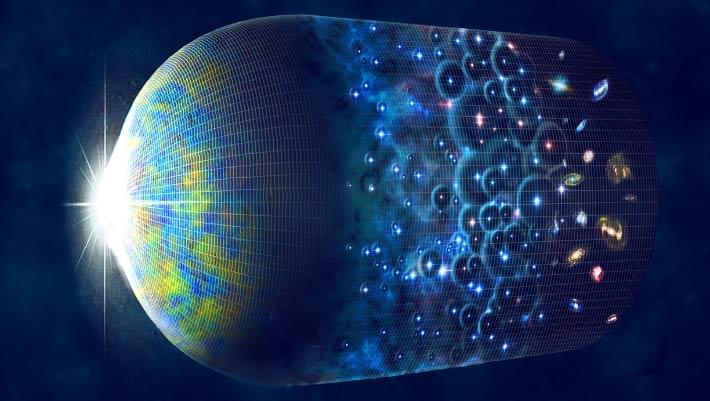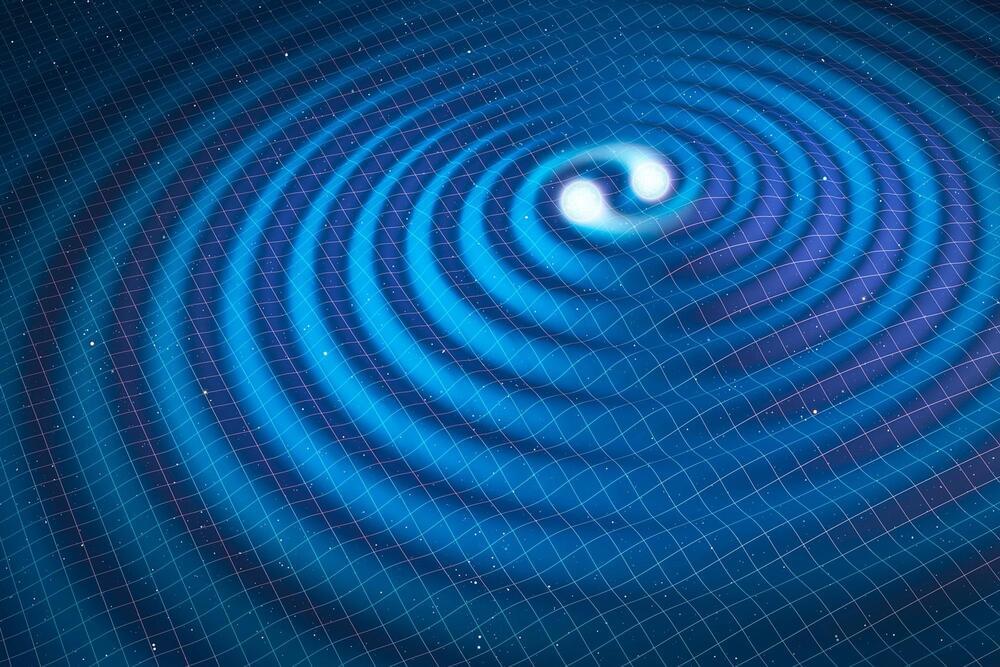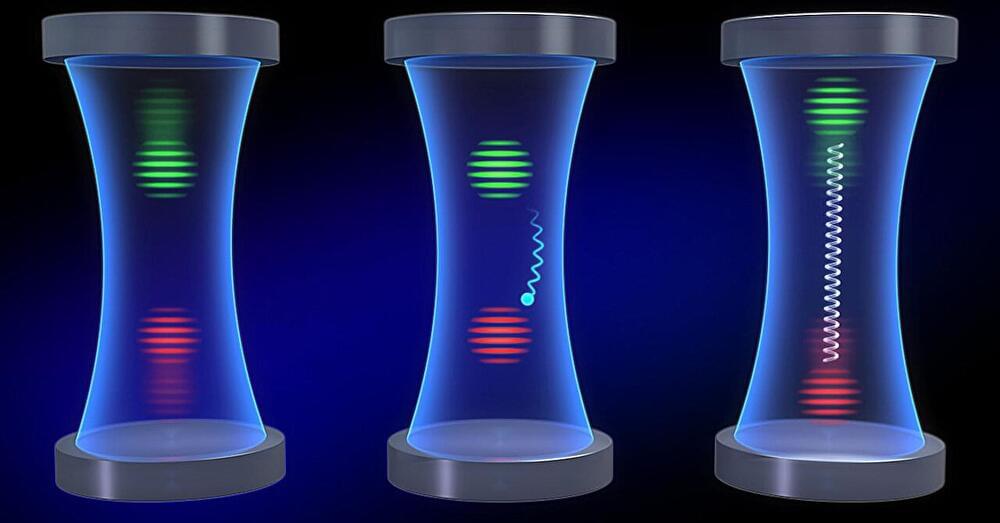In a paper published in the Journal of Cosmology and Astroparticle Physics, scientists examined the theoretical and observational cases for a ‘cosmic glitch’ in Universe’s gravity.



Recently more careful examination of the structure of the universe has thrown up fresh reasons to doubt cold dark matter. Its concept may work well at the largest scales, but on the scale of individual galaxies, something seems incomplete.
According to the cold dark matter model, dark matter sub-halos of all sizes, right down to Earth-scale masses, should exist. This would be a lot of invisible cannonballs to be floating around the Milky Way and interacting with star streams, yet hardly any evidence has been found, besides in 2018, when Adrian Price-Whelan and Ana Bonaca found that one particular star stream, better known as GD-1, has gaps along its length, as if it has been hit multiple times.
Another more recent doubt about the cold matter concept is that simulations show halos should get denser towards the center of the galaxy: the closer you get to the center, the more dark matter per unit volume should be. However, when astronomers look at the way galaxies move, this isn’t what they see: the dark matter appears evenly distributed across the halo of our galaxy, especially in the core regions. Which could be a hint that something more complex is going on.

A new study will improve the detection of gravitational waves —ripples in space and time. Scientists at the University of Minnesota Twin Cities College of Science and Engineering co-led the research with an international team.
The research aims to send alerts to astronomers and astrophysicists within 30 seconds after the detection, helping to improve the understanding of neutron stars and black holes and how heavy elements, including gold and uranium, are produced.
The findings were recently published in the Proceedings of the National Academy of Sciences of the United States of America (PNAS), a peer-reviewed, open access, scientific journal.

Precisely measuring the energy states of individual atoms has been a historical challenge for physicists due to atomic recoil. When an atom interacts with a photon, the atom “recoils” in the opposite direction, making it difficult to measure the position and momentum of the atom precisely. This recoil can have big implications for quantum sensing, which detects minute changes in parameters, for example, using changes in gravitational waves to determine the shape of the Earth or even detect dark matter.

The open CMS detector during the second long shutdown of CERN’s accelerator complex. (Image: CERN) When we look at ourselves in a mirror, we see a virtual twin, identical in every detail except with left and right inverted. In particle physics, a transformation in which charge–parity (CP) symmetry is respected swaps a particle with the mirror image of its antimatter particle, which has opposite properties such as electric charge. The physical laws that govern nature don’t respect CP symmetry, however. If they did, the Universe would contain equal amounts of matter and antimatter, as it is believed to have done just after the Big Bang. To explain the large imbalance between matter and antimatter seen in the present-day Universe, CP symmetry has to be violated to a great extent. The Standard Model of particle physics can account for some CP violation, but it is not sufficient to explain the present-day matter–antimatter imbalance, prompting researchers to explore CP violation in all its known and unknown manifestations. One way CP violation can manifest itself is in the “mixing” of electrically neutral mesons such as the strange beauty meson, which is composed of a strange quark and a bottom antiquark. These mesons can travel macroscopic distances in the Large Hadron Collider (LHC) detectors before decaying into lighter particles, and during this journey they can turn into their corresponding antimesons and back. This phenomenon, called meson mixing, could be different for a meson turning into an antimeson versus an antimeson turning into a meson, generating CP violation. To see if that’s the case, researchers need to count how many mesons or antimesons survive a certain duration before decaying, and then repeat the measurement for a given range of durations. To do so, they have to separate mesons from antimesons, a task called flavour tagging. This task is crucial to pinning down CP violation in meson mixing and in the interference between meson mixing and decay. At a seminar held recently at CERN, the CMS collaboration at the LHC reported the first evidence of CP violation in the decay of the strange beauty meson into a pair of muons and a pair of electrically charged kaons. By deploying a new flavour-tagging algorithm on a sample of about 500 000 decays of the strange beauty meson into a pair of muons and a pair of charged kaons, collected during Run 2 of the LHC, the CMS collaboration measured with improved precision the parameter that determines CP violation in the interference between this meson’s mixing and decay. If this parameter is zero, CP symmetry is respected. The new flavour-tagging algorithm is based on a cutting-edge artificial intelligence (AI) technique called a graph neural network, which performs accurate flavour tagging by gathering information from the particles surrounding the strange beauty meson and those being produced alongside it. The collaboration then combined the result with its previous measurement of the parameter based on data from Run 1 of the LHC. The combined result is different from zero and is consistent with the Standard Model prediction and with previous measurements from CMS and the ATLAS and LHCb experiments. Notably, the combined result is comparable in precision to the world’s most precise measurement of the parameter, obtained by LHCb, a detector specifically designed to perform measurements of this kind. Moreover, the result has a statistical significance that crosses the conventional “3 sigma” threshold, providing the first evidence of CP violation in the decay of the strange beauty meson into a pair of muons and a pair of charged kaons. The result marks a milestone in CMS’s studies of CP violation. Thanks to AI, CMS has pushed the boundary of what its detector can achieve in the exploration of this fundamental matter–antimatter asymmetry. Find out more on the CMS website.

Bartosz Regula from the RIKEN Center for Quantum Computing and Ludovico Lami from the University of Amsterdam have shown, through probabilistic calculations, that there is indeed, as had been hypothesized, a rule of “entropy” for the phenomenon of quantum entanglement. This finding could help drive a better understanding of quantum entanglement, which is a key resource that underlies much of the power of future quantum computers. Little is currently understood about the optimal ways to make an effective use of it, despite it being the focus of research in quantum information science for decades.
The second law of thermodynamics, which says that a system can never move to a state with lower “entropy”, or order, is one of the most fundamental laws of nature, and lies at the very heart of physics. It is what creates the “arrow of time,” and tells us the remarkable fact that the dynamics of general physical systems, even extremely complex ones such as gases or black holes, are encapsulated by a single function, its “entropy.”
There is a complication, however. The principle of entropy is known to apply to all classical systems, but today we are increasingly exploring the quantum world. We are now going through a quantum revolution, and it becomes crucially important to understand how we can extract and transform the expensive and fragile quantum resources.
Black holes, white holes, wormholes, anti-universes, and all kinds of awesome relativity weirdness:
Einstein was wrong about black holes, what else? Use code veritasium at the link below to get an exclusive 60% off an annual Incogni plan: https://incogni.com/veritasium.
A massive thank you to Prof. Geraint F. Lewis and Prof. Juan Maldacena for their expertise and help with this video.
A huge thank you to those who helped us understand this complicated topic: Dr. Suddhasattwa Brahma, Prof. Carlo Rovelli, Dr. Hal Haggard, Prof. Martin Bojowald, Dr. Francesca Vidotto, Prof. Andrew Hamilton, and Dr. Carl-Fredrik Nyberg Brodda.
A special thanks to Alessandro Roussel from ScienceClic for his spectacular simulations and feedback on the video. Check out his channel here: https://ve42.co/ScienceClic.

Computer simulations by astronomers support the idea that dark matter—matter that no one has yet directly detected but which many physicists think must be there to explain several aspects of the observable universe—exists, according to the researchers, who include those at the University of California, Irvine.

Cosmological puzzles are tempting astronomers to rethink our simple picture of the universe – and ask whether dark matter is even stranger than we thought.
By Stuart Clark
Dark energy is one of the biggest mysteries in all the Universe. Is there any way to avoid ‘having to live with it?’